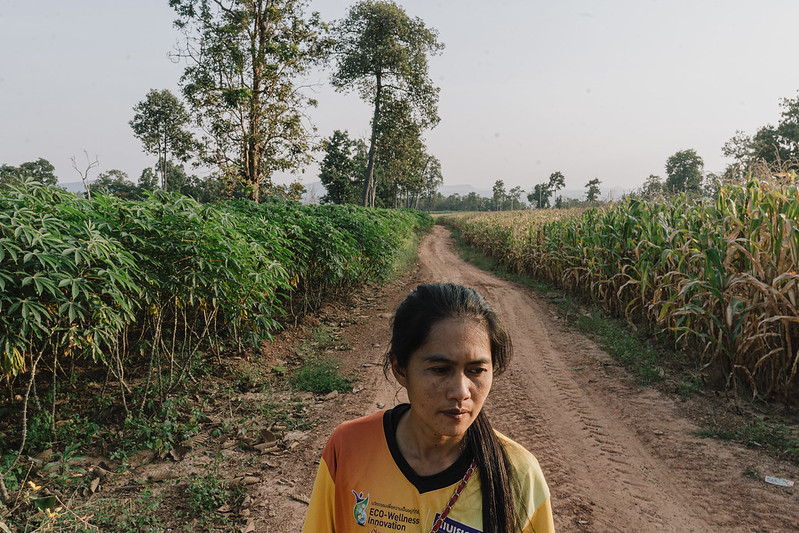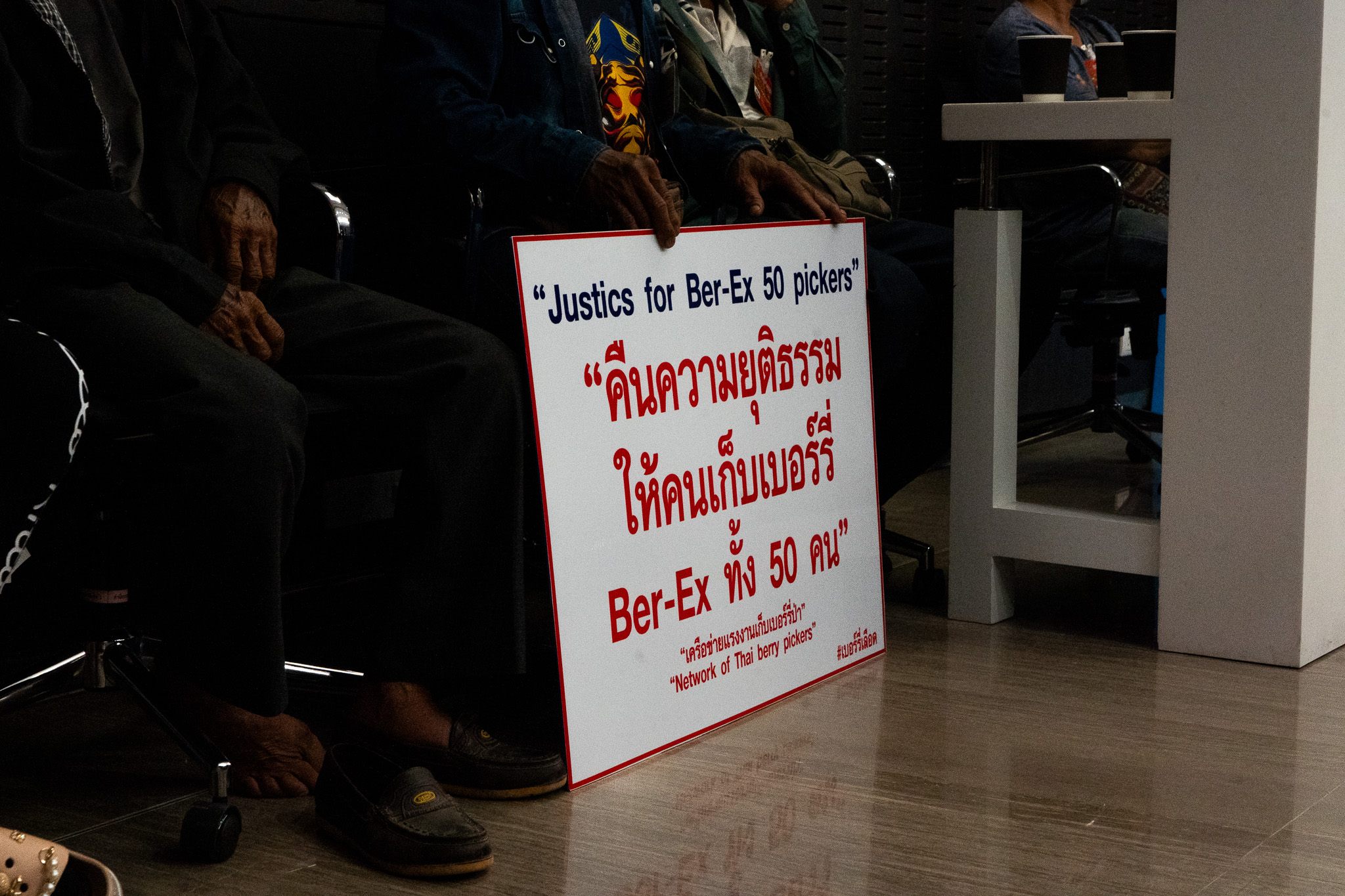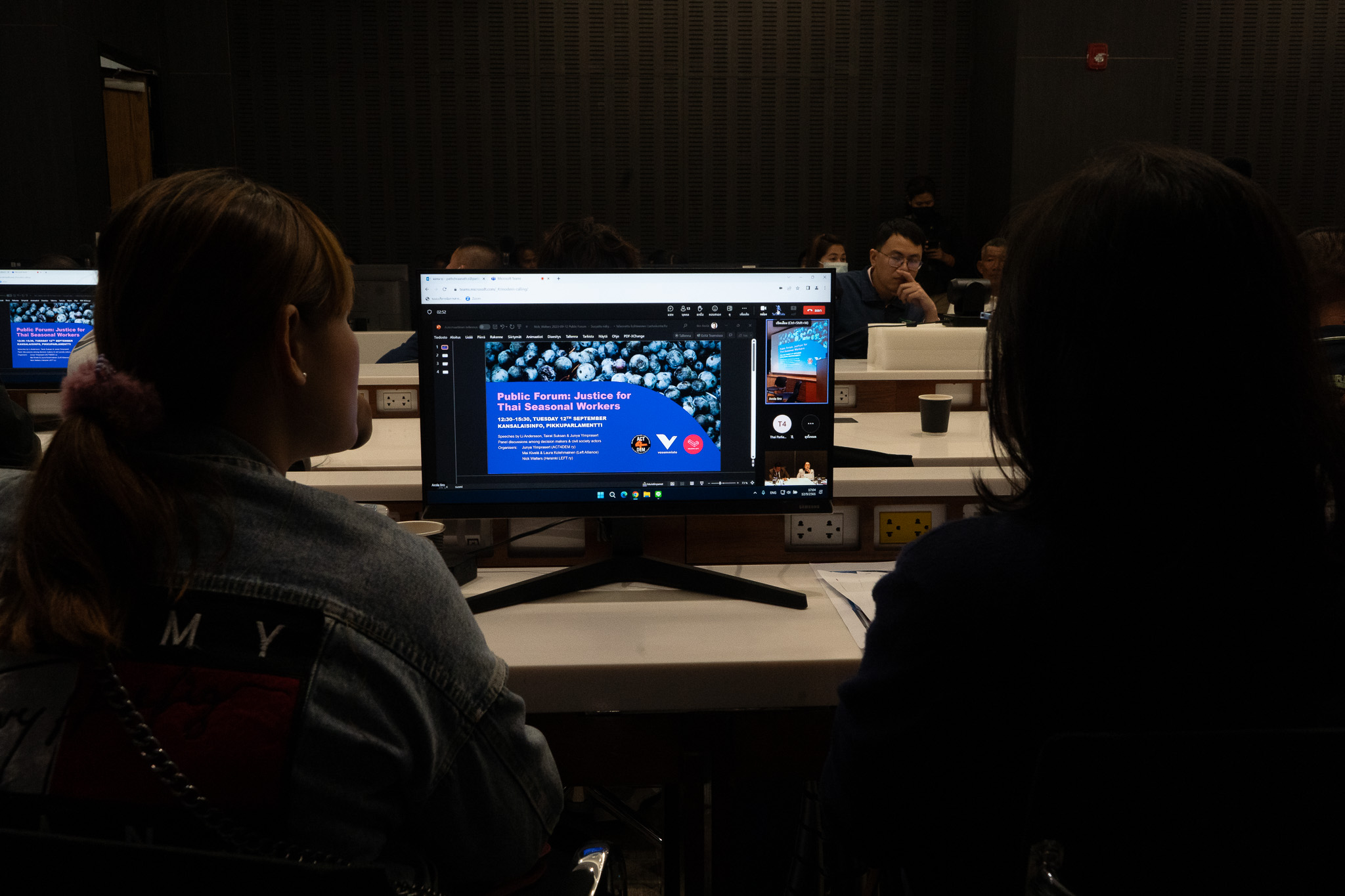Thailand has long relied on an informal system for waste management and recycling, but with consumer culture on the rise, landfills have reached capacity and the system is reaching a tipping point in Khon Kaen. Now, the municipality is working to reform waste management and “green” the city, raising new questions for long-standing scavenger communities.
By Zoe Swartz and Mariko Powers
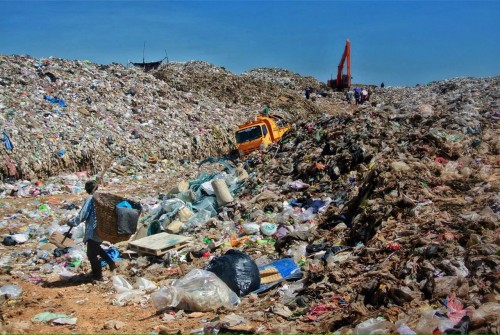
A garbage truck takes waste from Khon Kaen to the municipality’s landfill. Gas for Khon Kaen municipality’s 45 trucks totals 23,000 liters per month, according to the Office of Public Health and the Environment at the Khon Kaen Municipality.
A staggering gray mound protrudes from the flat green rice fields of Khon Kaen province. At first glance it could be a mountain or a ridge, but on closer examination, it becomes clear that this immense form is in no way natural. The mass is an amalgamation of discarded items, and a putrid brown liquid oozes out to create a shallow moat, keeping away the faint of heart. An unearthly addition to the landscape, this mountain of trash is the Khon Kaen landfill, a 98-rai (39 acre) dump for the over 115,000 residents of Khon Kaen municipality.
The landfill is Khon Kaen’s monument to consumerism, a physical representation of the economic growth that has been achieved in the Northeast. In 2014, the Nation reported that the landfill held 800,000 tons of trash, and according to the Khon Kaen Office of Public Health and the Environment, the landfill currently takes in 209 tons of trash per day—almost double the 108 tons per day that it received in 2006.
“The landfill is full,” says Jumpon Mongkonsil, Director of the Environment Division at the Khon Kaen Municipality. The city was in the process of creating a new dump but has had trouble finding a suitable location. “We have some money to build a new landfill,” complains Mr. Jumpon. New sites have been proposed, “but villagers have protested because they don’t want to live near one.”
In an effort to eliminate Khon Kaen’s reputation for having the eighth biggest trash dump in the country, the municipality has been spearheading waste-reduction programs and landfill alternatives. “We take people to the landfill [to show them the problem of waste in Khon Kaen] and have them create a plan to reduce their own waste,” says Mr. Jumpon, citing one of the many initiatives his department has undertaken to “green” the city.
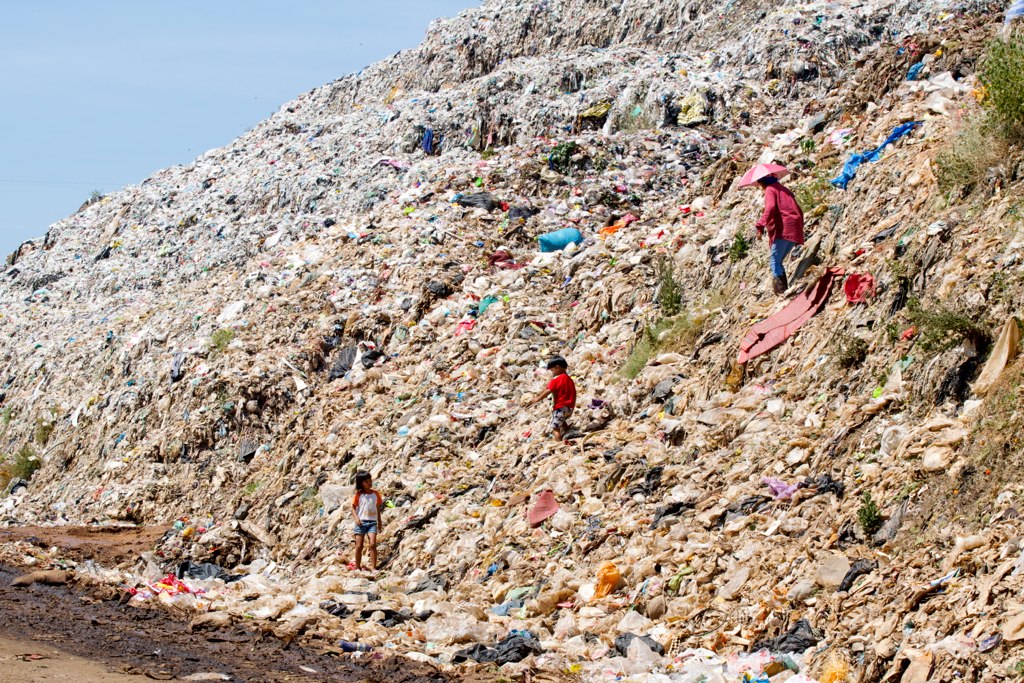
The Environmental Division of the Khon Kaen Municipality runs a program that brings people to the landfill so that they can see the implications of consumption first hand. Experts agree that public awareness is crucial to Thailand’s waste management strategy.
The Environment Division has placed 25 recycling bins around the city, hosts community educational workshops on “the 3 Rs” (reduce, reuse, recycle), and supports 15 communities in composting and household sufficiency training. These trainings teach people how to produce less trash by finding creative uses for items that would otherwise end up in the garbage, and show people how to grow their own food, which reduces packaging waste from food bought at the supermarket.
While these programs aim to bolster Khon Kaen’s long-term environmental sustainability, most agree that they are not enough to address the city’s current trash crisis. In lieu of building a new landfill, the municipality has partnered with a private company to build a trash incinerator in the vicinity of the current landfill. The incinerator, expected to open this year, will be able to burn 450 tons of trash per day. At that rate, it would take ten years to incinerate the current amount of trash at the site.
The Environment Division says that they completed an Environmental Impact Assessment (EIA) for the incinerator, and that the plant does not pose safety risks for nearby residents. Scavengers living near the landfill, however, express fear both for their health and their financial futures. “We don’t know whether we can still scavenge,” says Kampat Kwankla, a 58 year-old scavenger and community organizer, worry wrinkling his face. “Whether my life will be longer or shorter, I don’t know.”
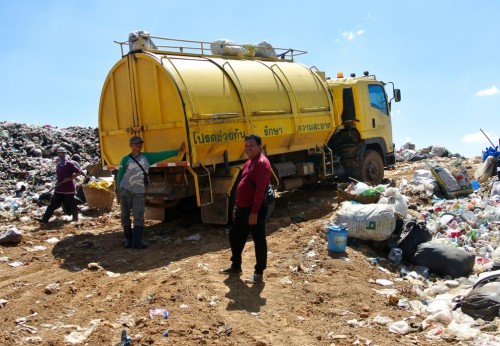
“We try to take care of scavengers, but they’re busy and don’t have time to come to programs,” says Mr. Jumpon. He and the municipality are making efforts to handle the issue of waste management as effectively as possible, but communication between the municipality and scavengers continues to be a challenge.
Since the landfill was established in 1965, it has provided a livelihood for the sixty households of Khambon Noi, a village that scavengers made by building their homes along the dumpsite. “It’s not sufficient, but it’s enough to survive day to day,” says Mr. Kampat.
Whether living near landfills or roving the city for recyclables, scavengers have traditionally been at the forefront of recycling efforts in the country. Scavenging provides a livelihood for families with few options. “Everyone here knows their parents collected garbage,” states Mr. Kampat. “We’re not educated and we’ve never worked any other job.”
In the long term, the construction of the new incinerator could jeopardize the landfill scavengers’ ability to make a living and villagers worry that it will negatively impact their health. Dr. Alice Sharp, professor at the School of Biochemical Engineering and Technology at Thammasat University, says, “I do understand the [anxiety] of communities, as some projects like this as well as other types do create environmental impact and affect their livelihood. The trust in the local and central government is missing.”
She states that incinerators can be safe, but only when they are used with appropriate types of waste, follow the operational procedure strictly, and have installed appropriate pollution control equipment.
While scavengers fear for their jobs, Mr. Kampat also acknowledges that Khon Kaen’s waste situation is only getting worse. “All day and all night the trash comes,” he says, referring to the stream of trucks that arrive at the landfill each day. Not only is Khon Kaen municipality generating more trash than ever before, the composition of waste in Thailand is increasingly made up of non-decomposable plastics. Research shows that Thailand is the sixth largest contributor to plastic waste in global oceans, indicating that waste production is not only reaching a tipping point in Khon Kaen, but the rest of the country as well.
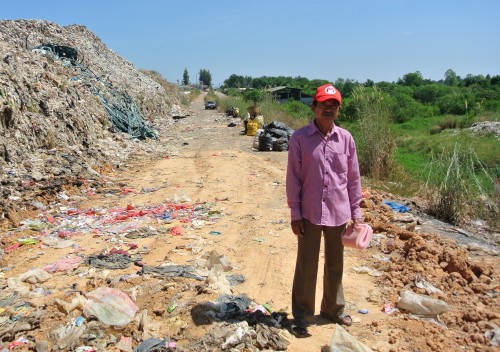
“All the villagers are afraid right now,” says Mr. Kampat of the trash incinerator expected to open at the landfill this year. “The plant shouldn’t be close to the community. The garbage is poisonous enough and now we will have the plant that may also be poisonous.”
Although the government has announced a “National Waste Agenda” for solid and hazardous waste, Dr. Sharp believes that the “Thai government alone may not be able to implement the system effectively.” She says that Thai government, businesses, and individuals need to support each other in sustainable waste practices, as all three have a part to play in the waste management cycle.
No matter the solution, the municipality and scavengers can agree that there needs to be a cultural shift towards less consumption. Although scavengers consume very little themselves, they are probably the people most aware of the crisis of consumption.
Sitting in front of his small concrete home, Mr. Kampat looks out at the mammoth peaks and valleys of garbage, the existence of which only a few are aware of. “We need to educate the next generation not to use too much plastic, even though it’s good for us [scavengers],” he says firmly, waving away the flies buzzing around him.
Despite an uncertain future, Mr. Kampat and the other 60 families by the landfill will continue to scavenge. “I have nowhere else to go. I was born and raised here,” he says solemnly. “All I can do is live day by day.”
While the enormity of trash at Khon Kaen’s landfill can make effective waste management seem like a daunting task, Mr. Jumpon remains optimistic. He affirms that the municipality will continue to educate the public on both the environmental and economic benefits of recycling. Scavengers, urban dwellers, and nearby villagers can all earn extra money selling their trash, he emphasizes. Sitting behind his desk adorned with pen holders and small dishes crafted from recycled wrappers, Mr. Jumpon explains, “it is another way to help the community.”
Zoe Swartz and Mariko Powers are freelance writers from the United States, living in Khon Kaen.



